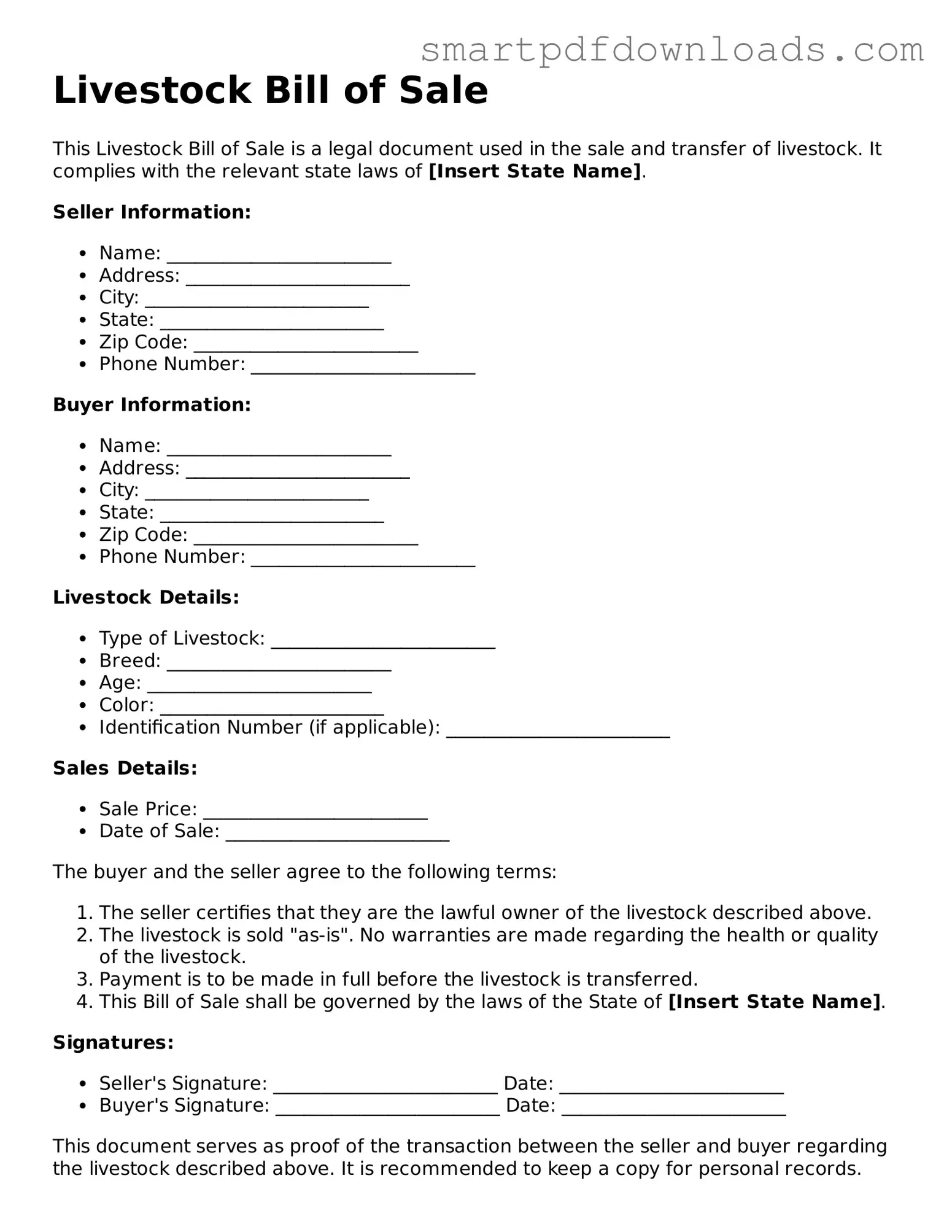Free Livestock Bill of Sale Form
A Livestock Bill of Sale form is a legal document used to transfer ownership of livestock from one party to another. This form outlines essential details such as the type and number of animals sold, the sale price, and the names of the buyer and seller. Proper completion of this form helps ensure a clear and enforceable transaction between the involved parties.
Edit Livestock Bill of Sale Online
